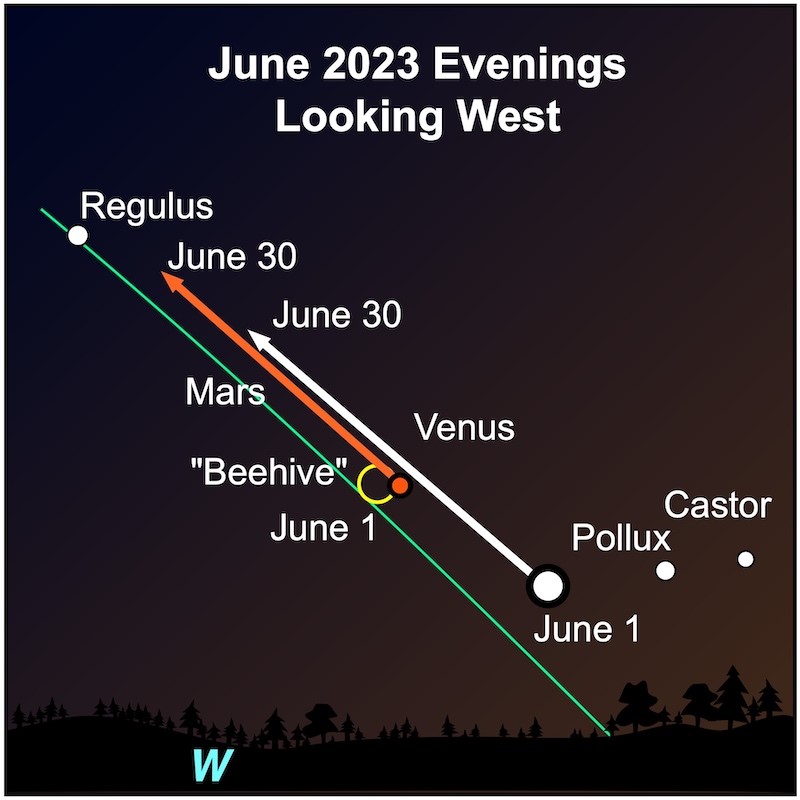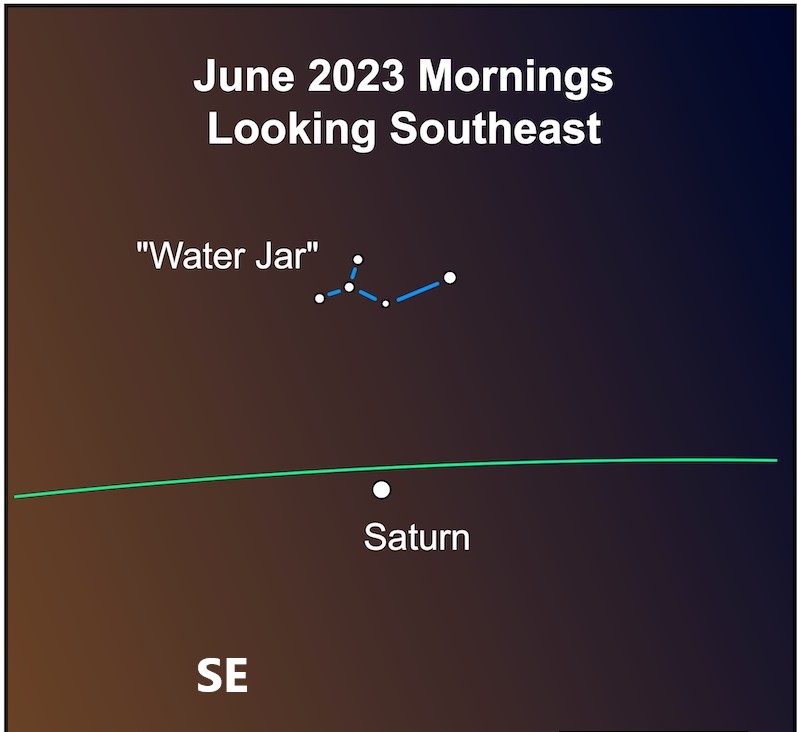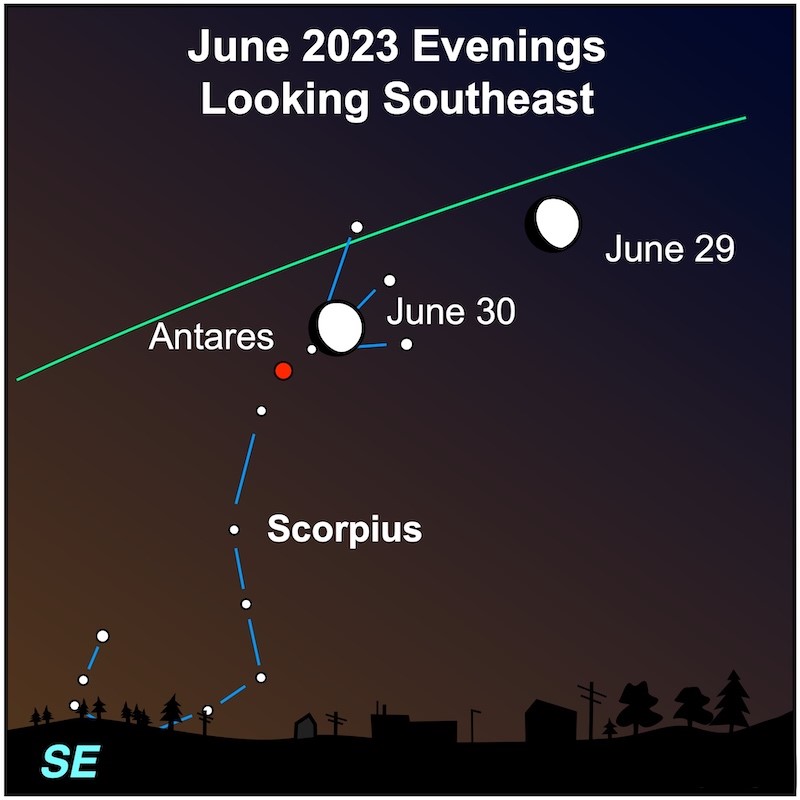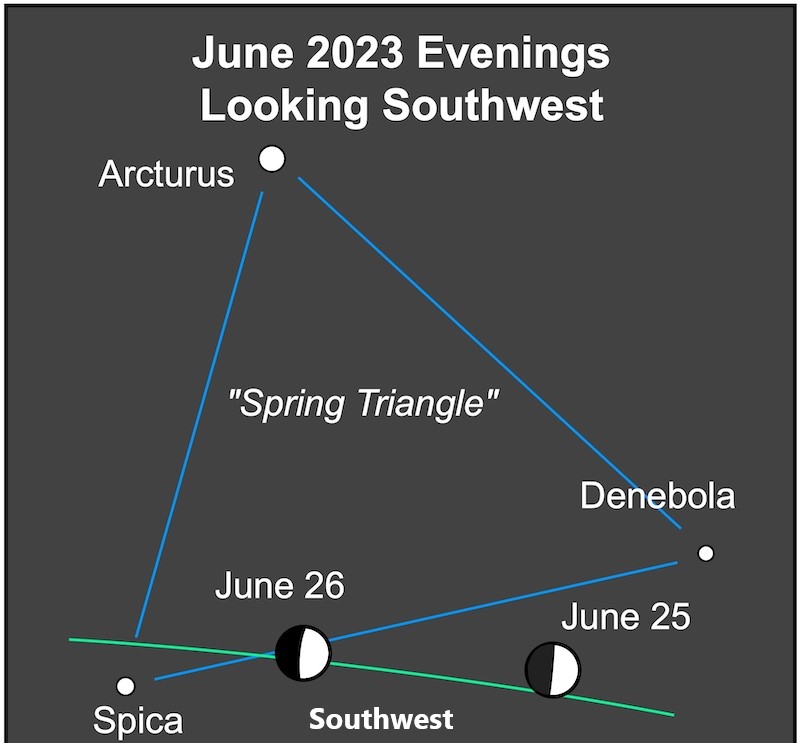Venus cannot be missed in the western sky and get brighter as the “evening star” is the brightest object in the night sky beside the moon in the night sky this week. Venus sets around 12:07 AM. It is as high above the western horizon and will start to set earlier each day.

Mars, the red planet, is much dimmer than Venus to the upper left of Venus. Mars sets around 12:19 AM this week. Venus along with the dimmer Mars, dominates the western skies after sunset.

Jupiter, which rises after Saturn around 3:14 AM, is the brightest object in the early morning sky except for the moon.
Farther to Jupiter’s upper right is Saturn rising around 1:01 AM in the constellation Aquarius. It is easy to spot in the southeast a few hours before sunrise since there are no bright stars around the planet.

On Thursday and Friday, the waxing moon slides through Scorpius the scorpion. Scorpius is one of the constellations that look like what is supposed to be, a scorpion. Scorpius sits on top of the southern horizon through the summer months. The Sumerians were the first to see these stars as a scorpion over 5000 years ago. The Greeks told the story of the scorpion stinging Orion the hunter. So, as Orion sets the scorpion rises chasing the hunter across the skies. The red star that makes up the heart of Scorpius is called Antares the super-giant red star. If you were to place Antares in our solar system, the outer diameter would be beyond Mar’s orbit.

Looking southwest the Summer Triangle is rising with three of the brightest summer stars: Vega (the Lyre), Deneb (the swan), and Altair (the Eagle). These three stars shine even with the moon close by.
Through the week of June 30th.
